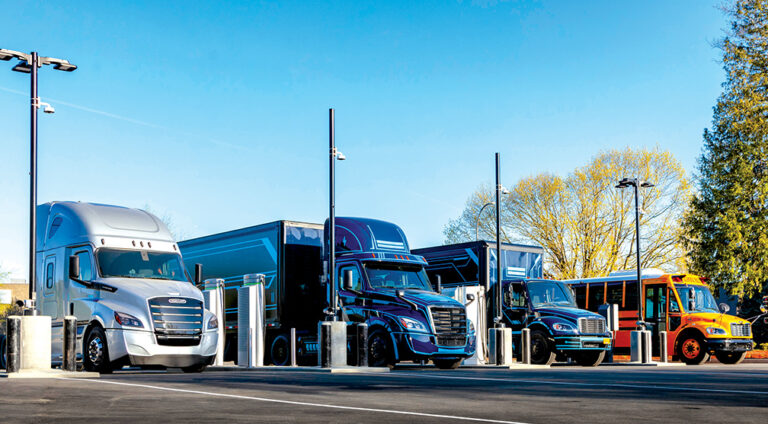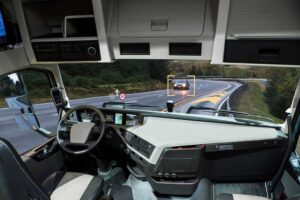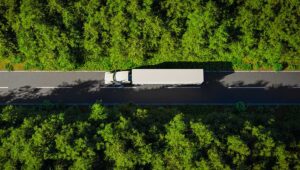The Urban Planning Conference was a bust. Leaders from cities across the U.S. gathered in New York City to discuss ideas for dealing with leading environmental health problems caused by pollution. Finding no solutions, the conference ended early.
However, a solution was on the horizon, just waiting for the technology to be developed to a point that the public would accept it.
The conference referenced above was held more than a century ago, in 1898, to discuss the pollution problem caused by horse manure in the streets. In New York alone, more than 150,000 horses produced an average of 22 pounds of the stuff each day.
That same year, the very first model of the “solution” was sold — the gasoline-powered automobile. Early models of the newfangled “horseless carriage” were unreliable, and those stranded by the frequent breakdowns often heard gleeful shouts of “Get a horse!” from passersby.
Politicians took positions for and against the automobile. Detractors complained about the engine noise and smoke, the dangerous higher speeds and the horrific potential of bringing thousands of gallons of flammable gasoline into populated areas.
It wasn’t until 1912 that autos outnumbered horses in the city, and another five years passed before the city’s horse-drawn trolleys were eliminated.
The internal combustion engine wasn’t the only power source being developed at the time. Steam power had been used in ships and locomotives for decades, and a number of inventors used downsized steam engines in their vehicles.
There were electric vehicles, too. They were slow and heavy, and they couldn’t go far.
Other power sources being explored included methane, diesel, compressed air and even springs used to store energy generated by a hand crank — but gasoline proved to be the most practical.
Fast-forward to 2021.
Two decades into the 21st century, the technology needed to replace the internal combustion engine is in the late stages of development. Electric-powered vehicles (EVs) are already on the roads. They’re limited in range, in part because of limited battery capacity and, in part, by the lack of facilities to recharge without returning to a home or business location.
Just as the infrastructure and the economy evolved to incorporate the automobile into a resistant society, it will evolve for EVs.
Of course, some major issues remain, such as where to get enough materials to make batteries to power millions of EVs and how to produce and deliver enough electricity to keep all of them charged.
There’s also the problem of funding roads and bridges. Currently, fuel taxes are collected for this purpose. Those tax dollars will dwindle as vehicles that don’t use fossil fuel take over the highways.
The Biden administration is determined to accelerate the technology that answers these and other questions. Concerns about pollution, including climate change impacted by carbon emissions, are driving the efforts.
An Aug. 5, 2021, an executive order issued by President Joe Biden directed that half of new passenger cars and trucks sold in the year 2030 must be zero-emission vehicles. The order also called for the federal government to adopt standards issued by the California Air Resources Board (CARB), which calls for 100% of passenger and small vehicles to be zero-emission by 2035.
However, those goals can’t be met without the infrastructure in place to support the vehicles. Two bills currently being considered in Congress include programs to jump-start that infrastructure, but political infighting has put their passage in doubt.
The first is the Infrastructure Investment and Jobs Act. Of the $1.2 trillion of spending included in the bill, more than $20 billion would be directed towards EV technology. Included are:
$7.5 billion to deploy a network of 500,000 charging stations along highway corridors to facilitate long-distance travel.
$2.5 billion for a grant program to develop and maintain “alternative fuel corridors,” where charging stations are publicly available. This also funds charging stations in certain publicly owned properties such as schools, parks and parking facilities.
$5 billion for the development of a DOT program to establish a national program to facilitate data collection, operation and maintenance of a national monitoring system for EV charging.
$5 billion for grants to states and other entities for the purchase of zero- and low-emission school buses.
Another $65 billion would be directed to the development of clean energy transmission, upgrading the current power infrastructure to facilitate the expansion of renewable energy and including “smart grid” technologies.
The infrastructure bill has bipartisan support and should have enough votes to pass, but a small group of far-left Democrats is refusing to support passage unless another funding bill passes first. That legislation would be the $3.5 trillion “Build Back Better” bill. EV provisions in this bill include:
- $13.5 billion to fund electric charging stations in “publicly accessible locations, multi-unit housing structures, workplaces and underserved areas.” The bill claims to also support “electrification of industrial and medium-heavy duty vehicles,” but does not include details.
- $7 billion for loan and grant programs at the Department of Energy (DOE) to support technology development and manufacturing of zero-emission vehicles.
- $5 billion to replace heavy-duty vehicles such as trash trucks and school buses, including job training for drivers and others impacted by the changes.
- $9 billion for energy grid improvement and modernization.
- $27.5 billion to climate finance institutions to support rapid deployment of low- and zero-emission technologies.
- Another $150 billion would be earmarked to create a “Clean Electricity Performance Program” (CEPP), monitored by the DOE, that would reward electricity suppliers who increase their percentage of “clean” energy with cash payments. It would also fine suppliers who do not increase that percentage.
Republicans are united in their opposition to the Build Back Better act, objecting to tax increases in the bill and claiming the spending amount is reckless. All but a few Senate democrats support the bill, but those few, added to the Republican opposition, are enough to defeat passage.
Senate Democrats are currently pushing for a budget reconciliation bill, a process that would enable passage with a simple majority. Without it, 60 votes would be needed to override a Republican filibuster.
The infrastructure bill, as of this writing, has passed the Senate but is still held up in the House. In the meantime, progress continues on designing and building the next generation of vehicles.
Cliff Abbott is an experienced commercial vehicle driver and owner-operator who still holds a CDL in his home state of Alabama. In nearly 40 years in trucking, he’s been an instructor and trainer and has managed safety and recruiting operations for several carriers. Having never lost his love of the road, Cliff has written a book and hundreds of songs and has been writing for The Trucker for more than a decade.








